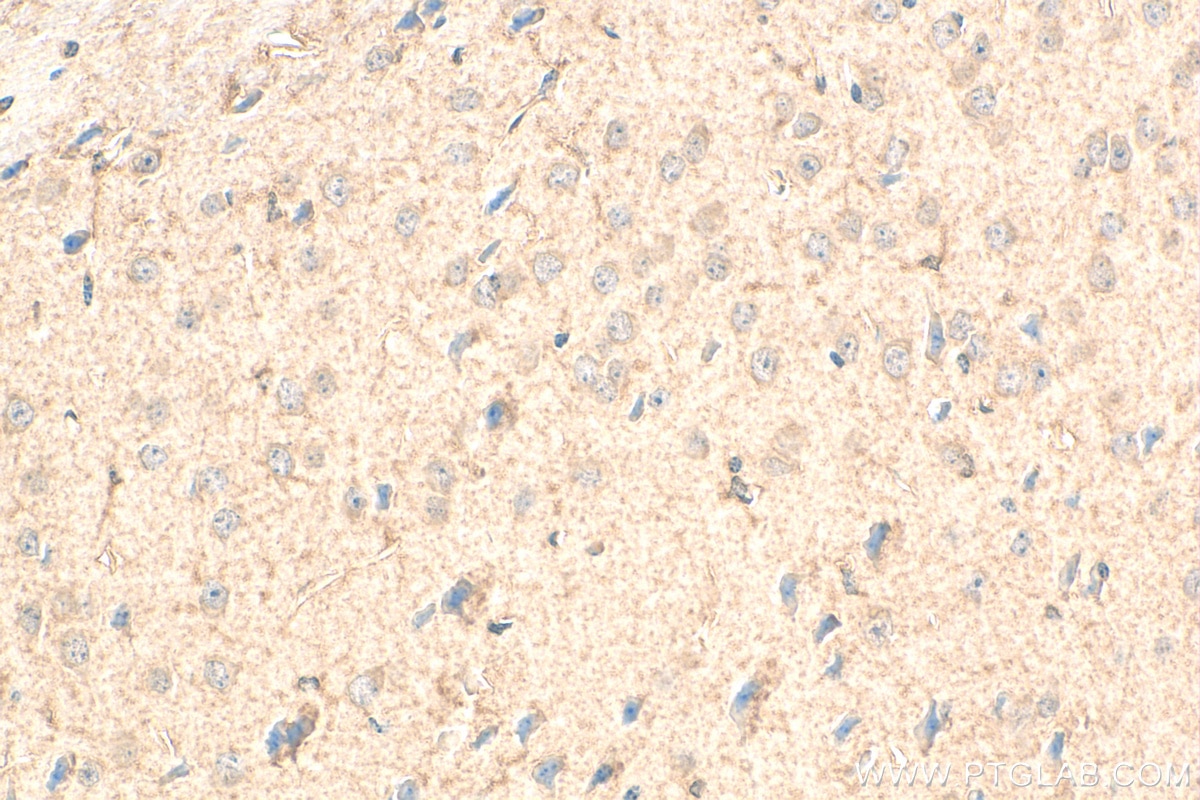- Phare
- Validé par KD/KO
Anticorps Polyclonal de lapin anti-EPHX2
EPHX2 Polyclonal Antibody for IHC
Hôte / Isotype
Lapin / IgG
Réactivité testée
Humain, rat, souris
Applications
IHC
Conjugaison
Biotin
N° de cat : Biotin-10833
Synonymes
Galerie de données de validation
Applications testées
| Résultats positifs en IHC | tissu cérébral de souris, il est suggéré de démasquer l'antigène avec un tampon de TE buffer pH 9.0; (*) À défaut, 'le démasquage de l'antigène peut être 'effectué avec un tampon citrate pH 6,0. |
Dilution recommandée
| Application | Dilution |
|---|---|
| Immunohistochimie (IHC) | IHC : 1:50-1:500 |
| It is recommended that this reagent should be titrated in each testing system to obtain optimal results. | |
| Sample-dependent, check data in validation data gallery | |
Informations sur le produit
Biotin-10833 cible EPHX2 dans les applications de IHC et montre une réactivité avec des échantillons Humain, rat, souris
| Réactivité | Humain, rat, souris |
| Hôte / Isotype | Lapin / IgG |
| Clonalité | Polyclonal |
| Type | Anticorps |
| Immunogène | EPHX2 Protéine recombinante Ag1283 |
| Nom complet | epoxide hydrolase 2, cytoplasmic |
| Masse moléculaire calculée | 63 kDa |
| Poids moléculaire observé | 63 kDa |
| Numéro d’acquisition GenBank | BC013874 |
| Symbole du gène | EPHX2 |
| Identification du gène (NCBI) | 2053 |
| Conjugaison | Biotin |
| Forme | Liquide |
| Méthode de purification | Purification par affinité contre l'antigène |
| Tampon de stockage | PBS with 50% glycerol, 0.05% Proclin300, 0.5% BSA |
| Conditions de stockage | Stocker à -20 °C. Éviter toute exposition à la lumière. Stable pendant un an après l'expédition. L'aliquotage n'est pas nécessaire pour le stockage à -20oC Les 20ul contiennent 0,1% de BSA. |
Informations générales
EPHX2(Epoxide hydrolase 2) acts on epoxides (alkene oxides, oxiranes) and arene oxides and plays a role in xenobiotic metabolism by degrading potentially toxic epoxides. A number of single nucleotide polymorphisms (SNPs) in human EPHX2 have been linked to cardiovascular disease risk, including increased risk of coronary heart disease, hyperlipoproteinemia, and type-2 diabetes (PMID: 14732757, 16595607, 14673705, 15845398, 17460077). It was observed in many tissues with the band of 63 kDa in the western blot. It has also been reported that the N-terminal domain might promote dimerization of EPHX2 (PMID:21553642).
Protocole
| Product Specific Protocols | |
|---|---|
| IHC protocol for Biotin EPHX2 antibody Biotin-10833 | Download protocol |
| Standard Protocols | |
|---|---|
| Click here to view our Standard Protocols |


